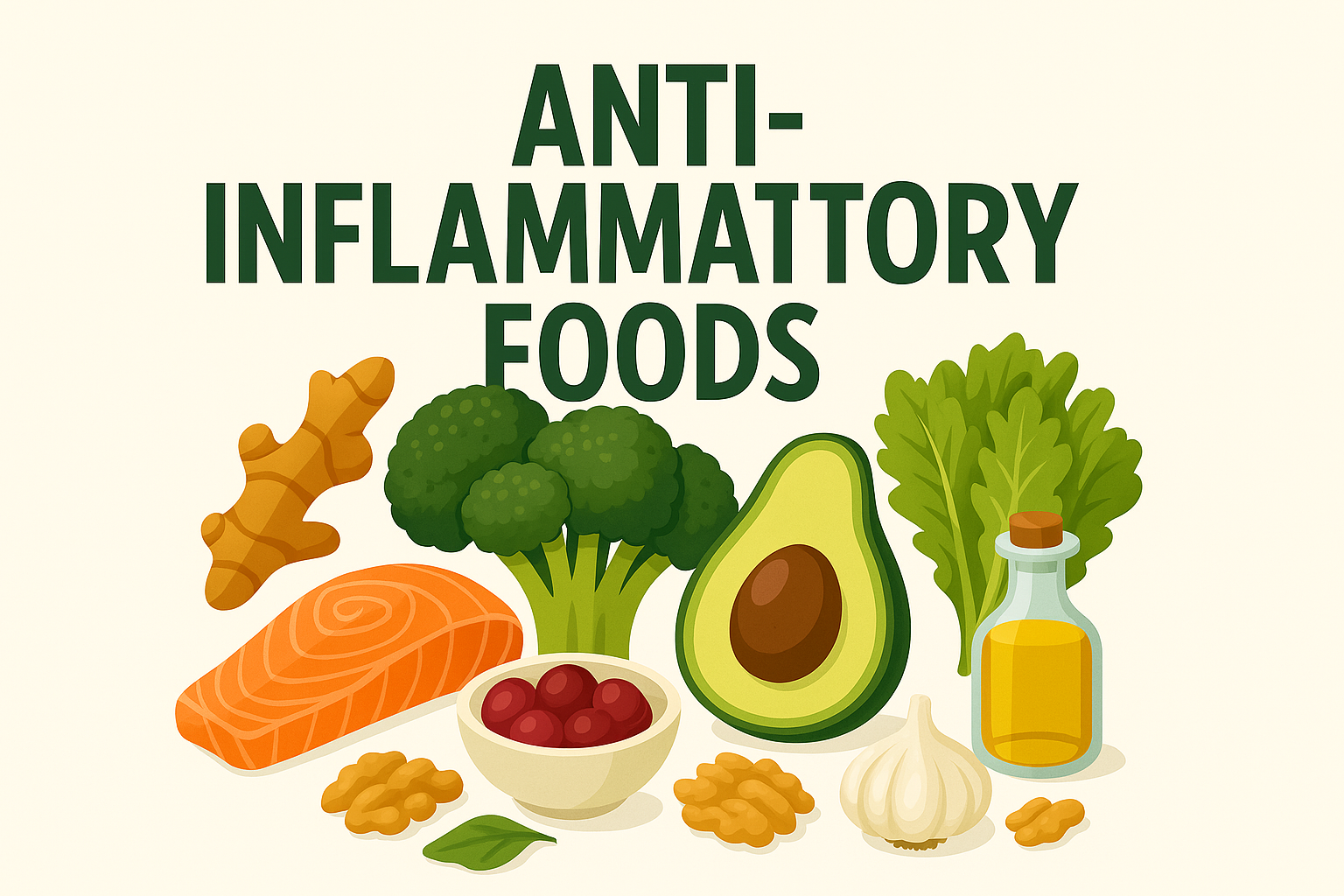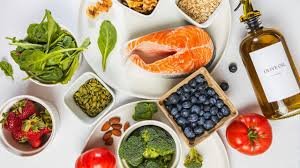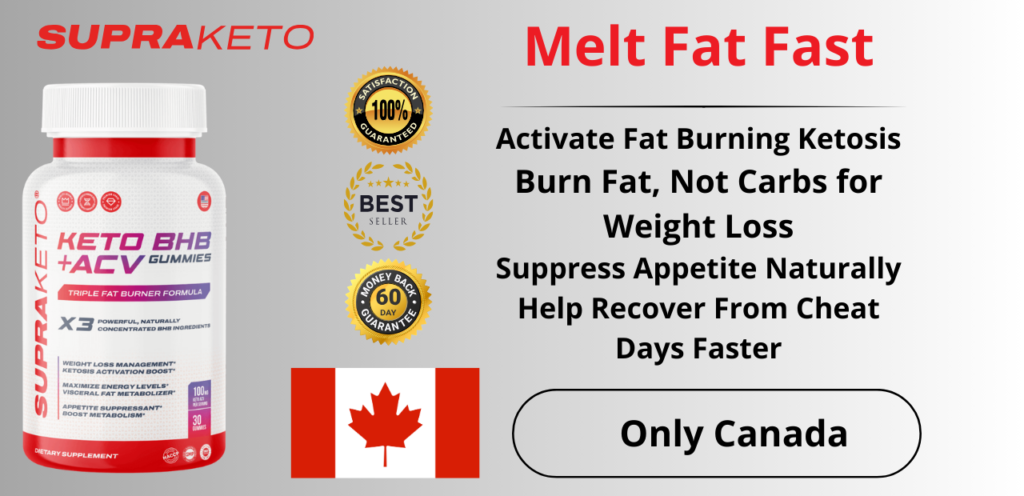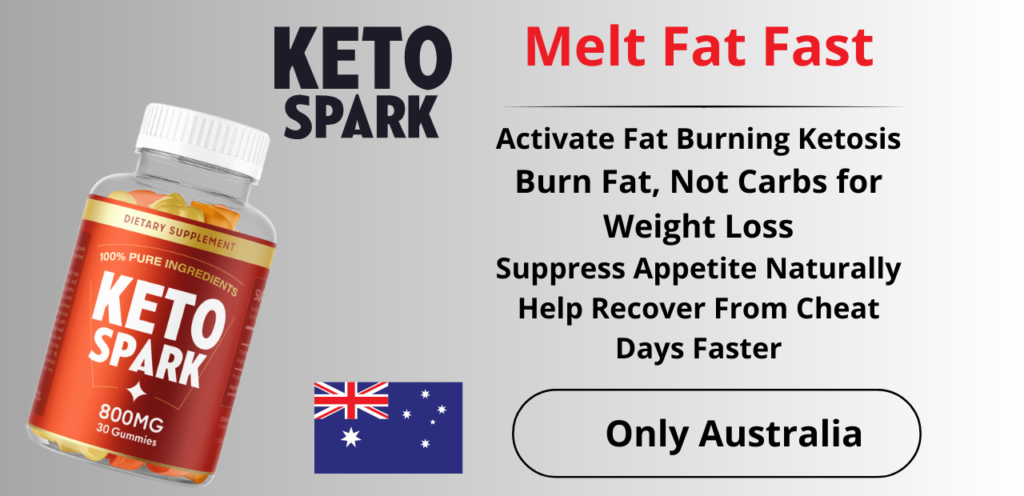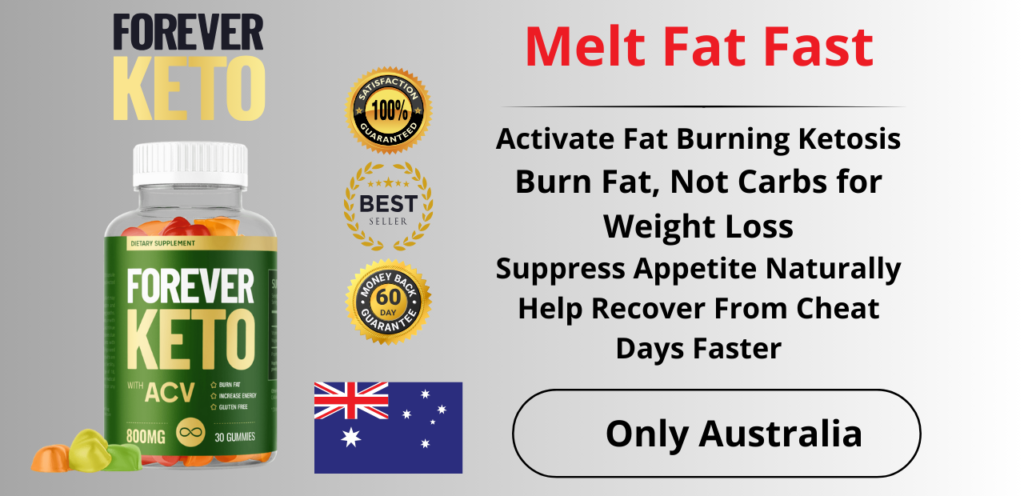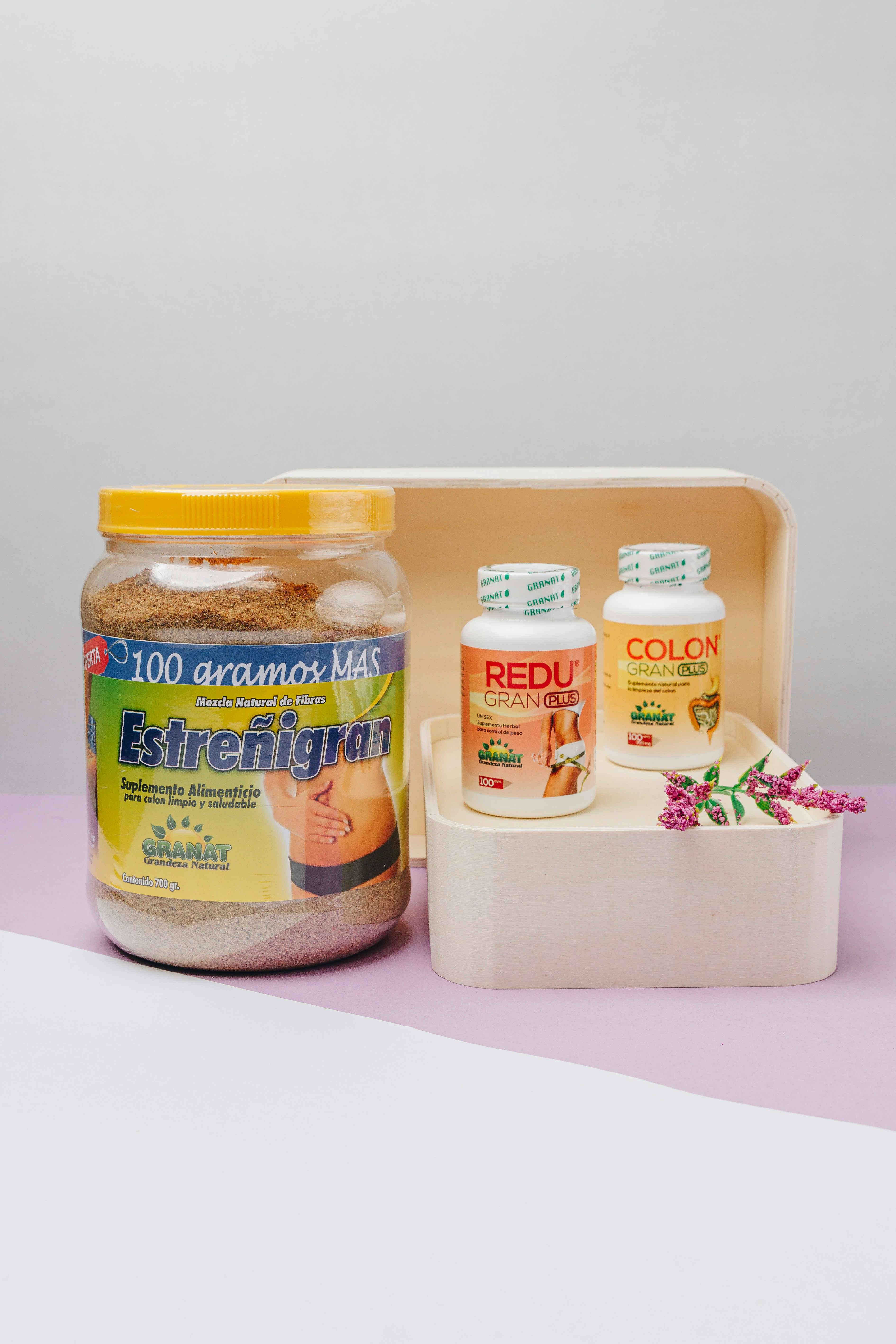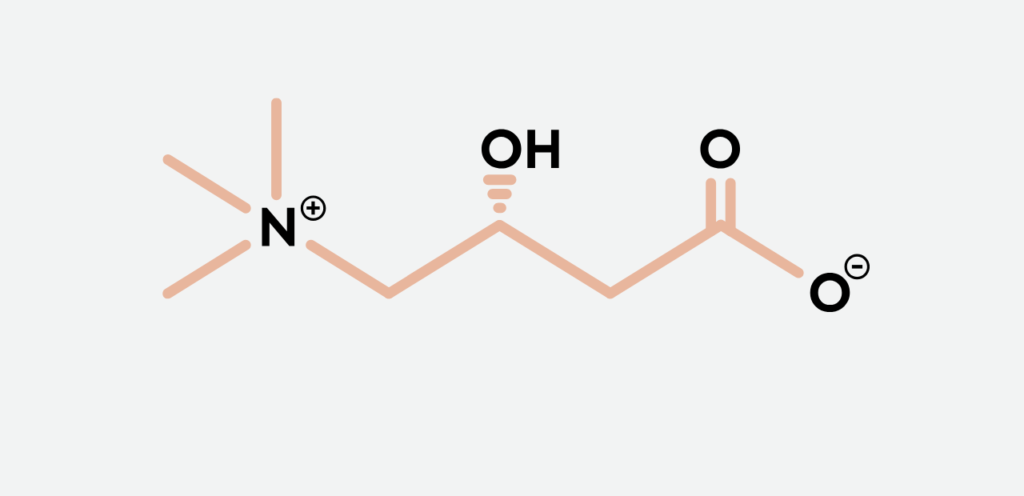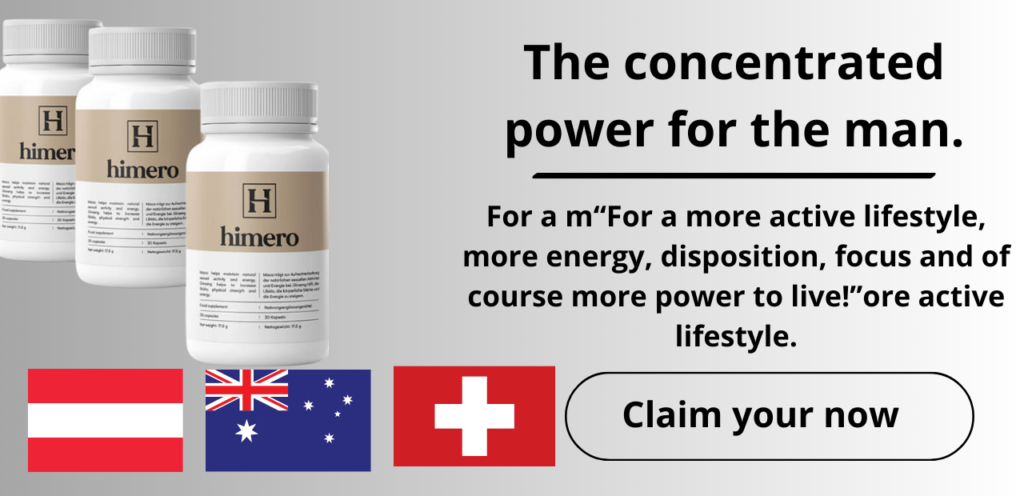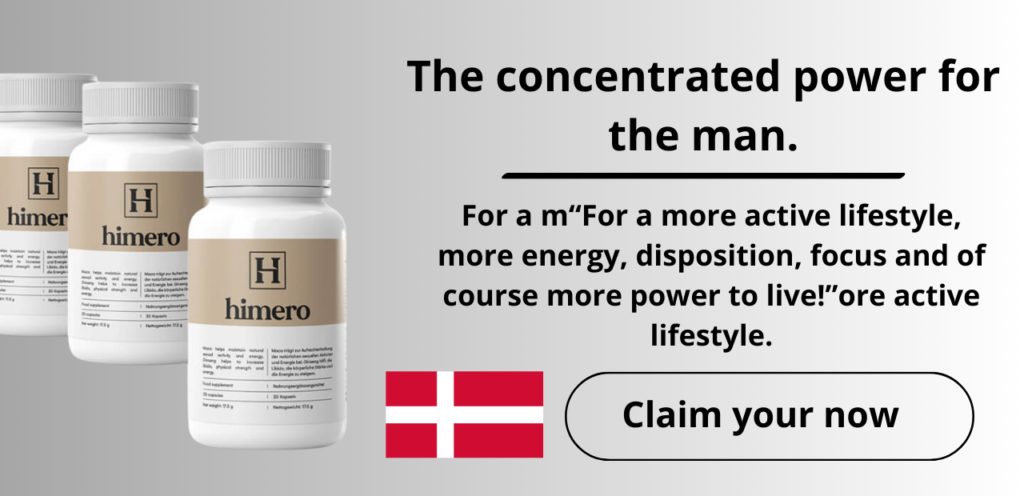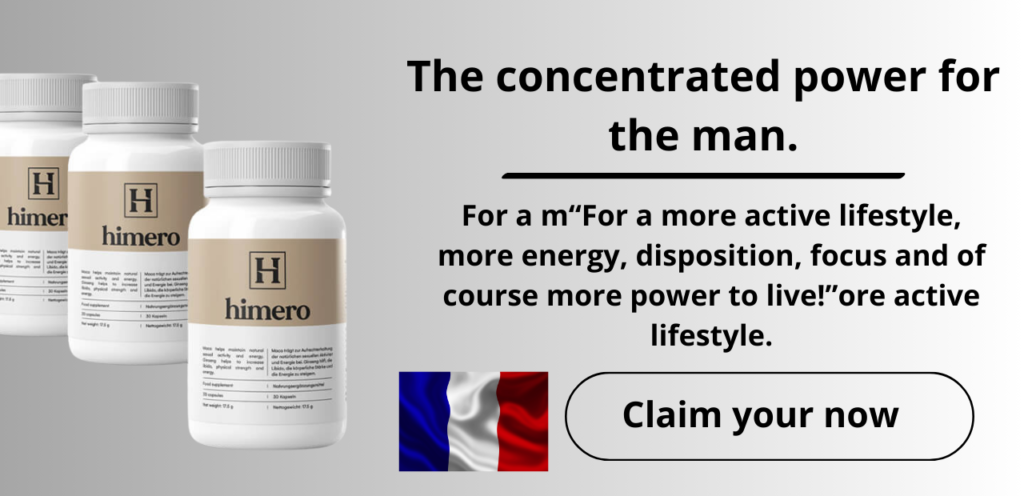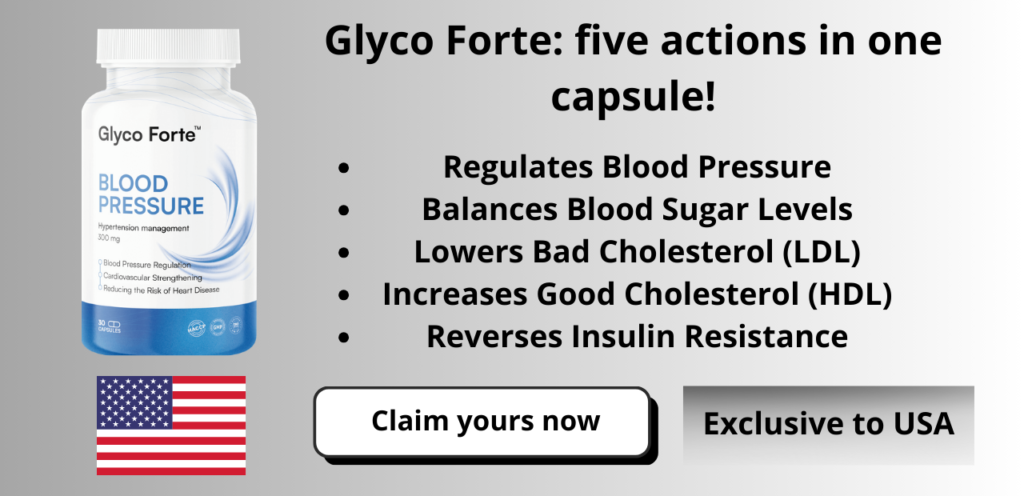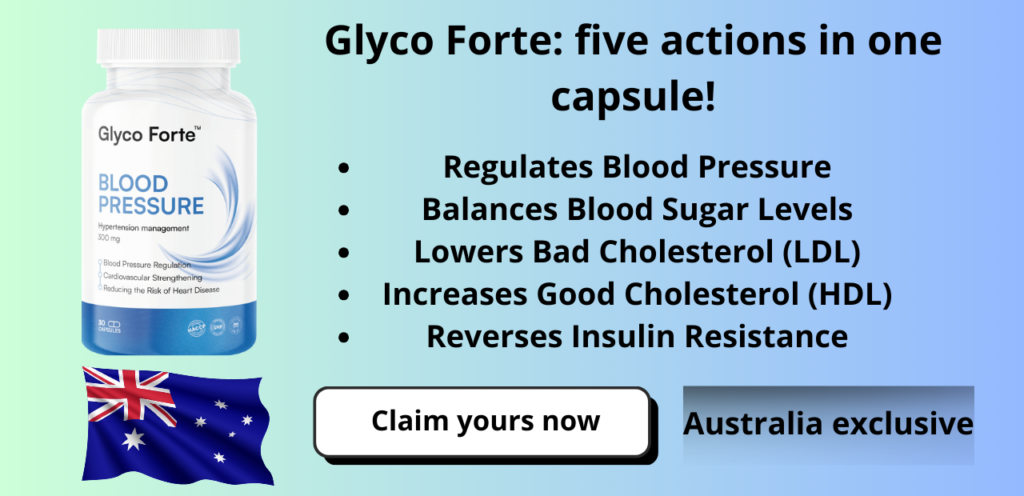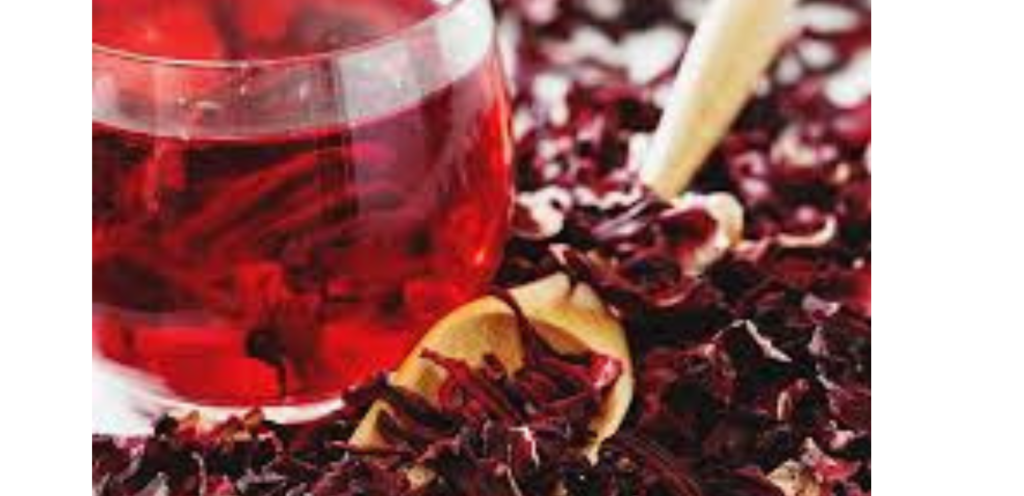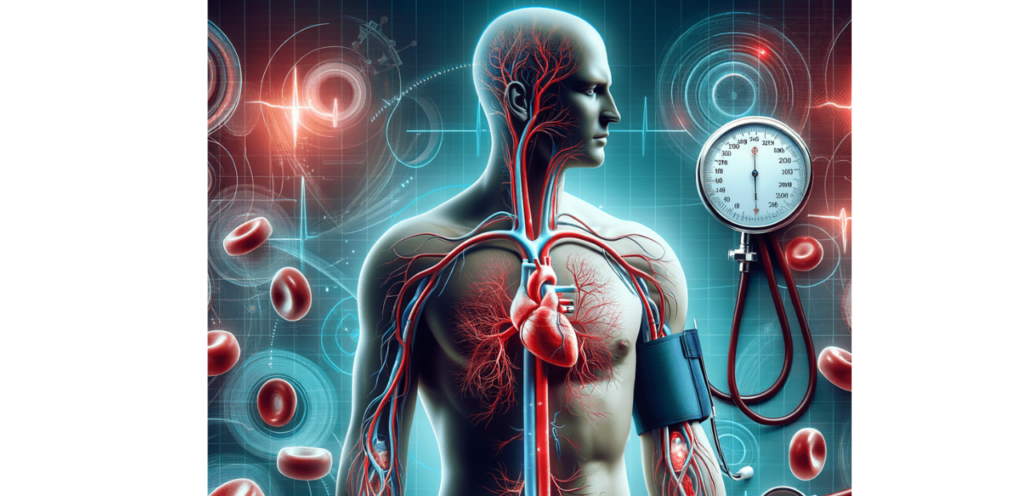Seu carrinho está vazio no momento!
Autor: J.Robert

Discover the Top 10 Anti-inflammatory Foods!
What is Inflammation?
Inflammation is the body’s natural immune response to injuries, infections, or irritations.
It’s a crucial defense mechanism that helps the body protect itself against invading agents, such as bacteria and viruses, while also promoting the repair of damaged tissues.
Inflammation is generally classified into two types: acute and chronic.
Acute inflammation is an immediate response to wounds or infections.
During this phase, the immune system activates specific cells and increases blood flow to the affected area, leading to symptoms like redness, swelling, and pain.
On the other hand, chronic inflammation is more concerning.
It occurs over a prolonged period and may last for months or even years.
Chronic inflammation is often linked to serious conditions such as heart disease, type 2 diabetes, and arthritis.
In these cases, the body keeps sending immune cells to the affected area even in the absence of actual threats, causing tissue damage and widespread health issues.
Diet plays a significant role in regulating inflammation.
Foods high in processed sugars and saturated fats can worsen inflammation, while anti-inflammatory foods like fruits, vegetables, and omega-3 fatty acids can help fight it.
High stress levels and a sedentary lifestyle are also known to aggravate inflammation.
Awareness of these factors is essential to managing inflammation and promoting better health.

“Let your food be your medicine and your medicine be your food” is a phrase from Hippocrates, the father of medicine. More than 2,000 years later, it’s still the purest truth.”
Top 10 Anti-inflammatory Foods
While inflammation is the body’s natural reaction to injury and infection, chronic inflammation can lead to several diseases.
That’s why it’s important to focus on foods with anti-inflammatory properties.
Here are ten of the most effective foods known to reduce inflammation and support overall health:
Turmeric – Contains curcumin, a powerful anti-inflammatory compound proven to block the production of inflammatory molecules.
Ginger – Packed with gingerol, which has both anti-inflammatory and antioxidant properties. Studies show it reduces inflammation markers.
Berries – Strawberries, raspberries, and blueberries are high in anthocyanins, antioxidants that combat oxidative stress and inflammation.
Fatty Fish – Salmon, sardines, and herring are rich in omega- fatty acids, which have potent anti-inflammatory effects.
Extra-Virgin Olive Oil – Loaded with antioxidants and healthy fats, this oil has proven anti-inflammatory benefits for cardiovascular health.
- Nuts – Especially walnuts, which contain healthy fats and antioxidants that have been linked to reduced inflammation.
Broccoli – A cruciferous vegetable with sulforaphane, an antioxidant that helps lower inflammation.
Green Tea – Rich in polyphenols, especially EGCG, which has been shown to exert strong anti-inflammatory effects.
Garlic – Contains sulfur compounds that help regulate immune function and reduce inflammation.
Spinach – A dark leafy green full of vitamins and antioxidants that contribute to reducing chronic inflammation.
Incorporating these foods into a balanced diet can significantly reduce inflammation and support a healthier lifestyle.

“Fruits low in sugar and good fats are allowed, such as berries, coconut, and avocado.”
How Anti-inflammatory Foods Work in the Body
Inflammation is a natural bodily reaction to harmful stimuli, but when it becomes chronic, it can contribute to disease development. Anti-inflammatory foods play a critical role in modulating this response through bioactive compounds that combat chronic inflammation.
Antioxidants, found in fruits and vegetables, neutralize free radicals, which are known to worsen inflammation.
- Vitamin C-rich foods like oranges and strawberries and vitamin E sources like nuts and seeds can reduce inflammatory markers and support cell recovery.
Polyphenols, present in green tea, berries, and cocoa, help regulate inflammatory gene expression and reduce the production of cytokines, fostering an anti-inflammatory state. Experts suggest that including polyphenols in the diet may prevent diseases linked to chronic inflammation.
Essential fatty acids, particularly omega-3s from fish and flaxseed, are well-known for reducing inflammation and supporting heart health. Their ability to block inflammatory substances makes them a core component of an anti-inflammatory diet.
In short, adopting a diet rich in anti-inflammatory foods is a powerful strategy to improve overall health and minimize the risks associated with chronic inflammation.
Consumption Tips and Practical Advice
Integrating anti-inflammatory foods into your daily routine is an effective way to combat chronic inflammation and improve your health. Here are some easy and practical suggestions:
Combine multiple anti-inflammatory ingredients into flavorful meals. For instance, a dish with quinoa, broccoli, and avocado offers a solid base of anti-inflammatory nutrients. Enhance flavors with turmeric and ginger for an extra boost
Try nutritious smoothies by blending berries (like strawberries and raspberries) with spinach. This not only increases your intake of anti-inflammatory foods but also provides a fresh, energizing start to the day. Add chia or flax seeds for omega-3 support
Consistency matters. Aim to include at least one serving of anti-inflammatory foods in every meal. The regular Consumption of fatty fish like salmon and sardines has been linked to lower inflammation levels
Just as important as adding good foods is reducing harmful ones. Cut back on refined sugars, processed grains, and trans fats—these are known to spike inflammation.
Finally, small lifestyle adjustments like regular exercise and stress reduction can amplify the benefits of an anti-inflammatory diet and help you take control of your long-term health.
Other articles you might like!
“Ketosis: the metabolic key to natural, healthy and lasting weight loss!”
What is the Ketogenic Diet?
The ketogenic diet, commonly known as “keto,” is a nutritional regimen that drastically reduces carbohydrate intake and significantly increases the consumption of healthy fats.
The primary goal of this dietary change is to induce a metabolic state known as ketosis, in which the body primarily uses fat as an energy source instead of traditional carbohydrates.
This approach has gained popularity as a weight-loss strategy and a means of improving various health markers.
How Does the Ketogenic Diet Work?
The ketogenic diet operates on the principle that severely limiting carbohydrates, typically below 50 grams per day, forces the body to seek alternative energy sources.
Once glycogen reserves stored in muscles and the liver are depleted, the body converts fatty acids into ketone bodies, which the brain and other tissues can use as fuel.
This metabolic adaptation usually occurs within a week of starting the diet, although the timing varies between individuals.

“The process of ketosis generates a radical change from glycogenolysis to ketogenesis, a change in the body’s energy metabolism”
Origins of the Ketogenic Diet
The ketogenic diet originated from medical practices in the early 20th century, primarily used to treat refractory epilepsy in children.
Since then, its evolution has made it popular among those seeking to enhance physical fitness, promote weight loss, and manage metabolic conditions.
Currently, research is ongoing to explore its therapeutic potential for conditions like type 2 diabetes, polycystic ovary syndrome (PCOS), and neurodegenerative diseases.
Benefits of the Ketogenic Diet

“If done correctly, the ketogenic diet becomes a powerful ally in weight loss, you can use your metabolism to your advantage.”
The ketogenic diet, popularly known as “keto,” has become increasingly recognized for its proven benefits.
Weight Loss
One of the primary advantages is weight loss through the induction of ketosis.
Studies show that individuals following keto tend to lose more weight compared to traditional diets while also experiencing increased satiety.
Diabetes Control
Reducing carbohydrate intake helps stabilize blood glucose levels, reducing insulin dependence. Many individuals with type 2 diabetes see notable improvements, sometimes even reversing the condition.
Cardiovascular Health
Keto can decrease triglycerides and increase HDL (good cholesterol), reducing the risk of heart disease, especially beneficial for individuals with family histories of cardiovascular issues.
Cognitive Function
Ketones provide an efficient alternative fuel source for the brain, enhancing mental clarity and overall cognitive function.
Advantages of the Ketogenic Diet
Quick Adaptation
Keto allows rapid metabolic adaptation, shifting the body into fat-burning ketosis efficiently.
Increased Satiety
Foods high in healthy fats offer prolonged feelings of fullness, reducing overall calorie intake and making the diet sustainable in the long term.
Enhanced Physical and Mental Performance
Keto diet followers report increased energy levels, improved mental clarity, and potentially enhanced physical performance due to efficient ketone-based energy utilization.
Disadvantages and Risks of the Ketogenic Diet
While effective, keto presents certain risks:
Nutritional Imbalances
Extreme carbohydrate restriction can lead to deficiencies in vitamins, minerals, and fiber typically found in fruits, vegetables, and whole grains.
Keto Flu
Initial adaptation often includes symptoms like fatigue, headaches, nausea, and irritability, collectively known as “keto flu.”
Health Concerns
Individuals with conditions like type 1 diabetes, pancreatic disorders, or eating disorders may experience adverse effects without proper medical guidance.
Professional consultation is recommended before beginning the ketogenic diet.
Allowed and Restricted Foods on Keto

Dietary discipline is a fundamental part of getting into and staying in ketosis.
This will determine the success of the diet!Permitted Foods
- Meats: Chicken, beef, pork, fish
- Eggs
- Leafy greens: Spinach, kale
- Cruciferous vegetables: Broccoli, cauliflower
- Healthy fats: Avocados, olives, nuts, seeds
- Oils: Olive oil, coconut oil
- Moderate intake of dairy products: Cheese, cream
Restricted Foods
- Complex carbohydrates: Whole grains, beans, legumes
- Sugars and sweets
- Most fruits, except small portions of berries
- Processed foods and additives
Tips for Starting the Ketogenic Diet
- Plan meals, emphasizing low-carb, high-fat foods.
- Prepare and portion meals in advance to prevent deviation.
- Stay hydrated and maintain electrolyte balance (sodium, potassium, and magnesium) to minimize keto flu symptoms.
- Join support groups for motivation and practical advice.
Experiences and Testimonials
Positive Experiences
- Maria, a 34-year-old teacher, lost 12 kg in six months, reporting increased energy and reduced anxiety.
- Carlos, a 45-year-old engineer, significantly improved his type 2 diabetes management, reducing his medication.
Challenges
- Ana, a mother of two, struggled with diet adaptation and eventually abandoned it due to difficulty accommodating family meals.
Individual experiences vary, highlighting the importance of personalized evaluation.
Final Considerations
The ketogenic diet offers significant benefits for weight loss and metabolic health but should be approached cautiously due to potential risks.
Professional nutritional guidance is essential to ensure nutritional adequacy and a healthy transition into ketosis.
Ultimately, keto can be a powerful tool, though it’s important to understand personal goals and nutritional needs clearly before committing to this lifestyle.
Are you ready?
This is a challenging but very effective diet if you focus on your goal.
Want help getting started?
Today, we have some products that make it much easier to enter and remain in a state of ketosis.
See below for some options!
Magnesium and Health: The Essential Mineral Your Body Needs Right Now

Magnesium and Health: Benefits, Deficiency, and Supplements
Discover why magnesium is essential for your body, how to detect deficiency, the best food sources, and when to consider magnesium supplementation.
Feeling tired, anxious, or dealing with muscle cramps? You might be missing a powerful but overlooked mineral: magnesium.
In this complete guide, you’ll learn how magnesium influences your body, how to spot deficiency, which foods are rich in it, and when supplementation makes sense.
What is Magnesium, and Why Is It So Important?
Magnesium is an essential mineral involved in over 300 biochemical reactions in the human body. It plays a critical role in:
- Muscle function
- Nervous system regulation
- Energy production
- Bone health
Without magnesium, your body simply can’t perform at its best.
Types of Magnesium and Which One Works Best
Magnesium comes in various forms:
- Magnesium citrate – great absorption
- Magnesium oxide – common but low bioavailability
- Magnesium glycinate – gentle on the stomach
Each type has different absorption rates and effects. Choose wisely based on your needs.
Common Symptoms of Magnesium Deficiency

“Magnesium is essential for the proper functioning of our body, and a lack of this mineral can cause a lot of discomfort!”
Many people are deficient in magnesium without realizing it. Symptoms can be subtle, but here are the most common signs:
- Constant fatigue
- Muscle cramps and spasms
- Trouble sleeping
- Anxiety or irritability
- Poor concentration
These issues are often misattributed to stress or aging — when in reality, it may be magnesium deficiency.
Best Food Sources of Magnesium

There are many foods that are a source of magnesium, and need to be incorporated into our diet, a healthy diet is the first step!
Fuel your body naturally with these top magnesium-rich foods:
- Leafy greens: spinach, kale, broccoli
- Seeds and nuts: almonds, Brazil nuts, pumpkin seeds
- Whole grains: quinoa, oats, brown rice
- Legumes: beans, lentils, chickpeas
Pro tip: Eat a variety of these daily for optimal intake.
What Affects Magnesium Absorption?
Even with a good diet, some factors can block magnesium absorption:
- Too much calcium or phosphorus in the diet
- Phytates (found in unsoaked grains and legumes)
- Digestive disorders like IBS or celiac disease
- Certain medications, especially diuretics
These can reduce magnesium uptake or increase loss through urine.
When Should You Consider Magnesium Supplementation?
You may benefit from supplements if:
- Blood tests confirm magnesium deficiency
- You’re under chronic stress or suffering from insomnia
- You’re an athlete or sweat excessively
- You have type 2 diabetes or high blood pressure
Always consult with a health professional before starting supplementation.
Possible Side Effects of Magnesium Supplements
Taking too much magnesium can lead to:
- Diarréia
- Nausea
- Abdominal cramping
Start with a low dose and increase gradually, preferably with food. Choose the right form to minimize side effects.
The Link Between Magnesium and Mental Health
Low magnesium levels are linked to:
- Anxiety
- Depression
- Irritability
- Insomnia
Magnesium helps regulate serotonin and dopamine, the neurotransmitters responsible for mood and emotional balance.
Studies show supplementation may ease symptoms in people with low magnesium levels.
Final Thoughts: Magnesium Is Not Optional
Magnesium is a core nutrient your body needs every single day.
It supports your brain, heart, muscles, and bones—and without it, you risk fatigue, poor sleep, and long-term health issues.
Don’t ignore magnesium. Optimize your intake and feel the difference in energy, focus, and well-being.
5 Best Teas to Detoxify and Improve Digestion.
Why Teas Are Essential for Your Gut Health
Taking care of your gut is essential for maintaining overall health and well-being.
Issues such as heartburn, gas, bloating, and constipation are common and can cause significant discomfort, along with an unpleasant feeling of abdominal fullness.
Fortunately, several natural teas can greatly assist in detoxifying the body and improving digestion.
Check out the best teas to include in your routine:
1. Peppermint Tea
Peppermint tea is known for quickly relieving heartburn and reducing abdominal bloating.
Its relaxing properties help soothe the digestive tract, promoting more efficient digestion.
Preparation: Boil some peppermint leaves in water for about 10 minutes, strain, and enjoy!
2. Ginger Tea
Ginger is famous for its anti-inflammatory and digestive properties.
This tea helps alleviate nausea, speeds up digestion, and promotes detoxification.
Preparation: Add some slices of ginger to boiling water and let it steep for about 15 minutes. It’s refreshing and very effective!
3. Chamomile Tea
Known for its calming effect, chamomile relieves abdominal discomfort and reduces belly bloating.
It’s an excellent tea at night, ensuring a calmer and more restorative sleep.
Preparation: Add dried chamomile flowers to hot water and steep them for 5 to 10 minutes.
4. Fennel Tea
Fennel tea is highly recommended for relieving gas and bloating.
Its digestive properties provide quick and effective relief from these symptoms, plus it’s delicious and aromatic.
Preparation: Boil fennel seeds in water for approximately 10 minutes. Strain before drinking.
5. Dandelion Tea
Dandelion tea is excellent for detoxifying the body, stimulating proper bowel function, and combating constipation.
Ideal for those seeking overall wellness.
Preparation: Steep dried dandelion roots in hot water for about 15 minutes.
Include these teas in your daily routine and enjoy their natural benefits for your gut and overall health!
Precautions:
Never consume too much tea, the safe dose is one tablespoon of tea to one cup of water!Peruvian Maca the Viagra of the Incas”,the Miracle of the Andes”
If you’re suffering from erectile dysfunction, you need to read this!

The secret of the Incas revealed, millennia of use by ancient peoples, and only now has science uncovered it!!!
Peruvian Maca and Male Sexual Performance: The Power of the Miracle Root
The search for natural solutions to improve male sexual health has grown exponentially in recent years.
Among the most popular natural supplements, Peruvian Maca, also known as the “Inca’s Viagra” and “Miracle of the Andes”, stands out as one of the most effective and well-documented options for increasing sexual desire, enhancing performance, and supporting male hormonal health.
Originating from the Andes Mountains in Peru, this root has been used for centuries by indigenous people as a superfood capable of strengthening the body, boosting energy, and improving fertility.
In this article, we will explore the benefits of Peruvian Maca for male sexual performance, explaining its composition, effects on the body, scientific studies that prove its efficacy, and how to use it most effectively to maximize its benefits.
What is Peruvian Maca?
Lepidium meyenii, commonly known as Peruvian Maca, is a root that grows at high altitudes in the Andes, where it withstands extreme weather conditions.
It resembles a radish in appearance and can vary in color, including yellow, red, and black.
Traditionally, Peruvians have consumed it for over 2,000 years, both as food and as medicine for various health conditions.
Modern interest in Peruvian Maca has surged due to its exceptional nutritional properties and its potential effects on libido, fertility, energy, and physical endurance.
Nutritional Composition of Peruvian Maca
Peruvian Maca boasts an impressive nutritional profile. It contains:
- Vitamins: B1, B2, B6, C, and E
- Minerals: Zinc, iron, calcium, potassium, magnesium, and selenium
- Essential amino acids
- Healthy fatty acids
- Alkaloids and bioactive phytonutrients
- Glucosinolates and polyphenols
This nutritional profile contributes to its positive effects on metabolism, hormonal production, and the circulatory system—fundamental aspects of male sexual health.
How Does Peruvian Maca Impact Male Sexual Performance?

The relationship between Peruvian Maca and male sexual performance has been the subject of numerous scientific studies. Let’s explore how this root influences key aspects of male sexuality.
1. Increased Libido and Sexual Desire
One of the most well-known benefits of Peruvian Maca is its aphrodisiac effect. Studies indicate that regular consumption can significantly increase male sexual desire.
🔎 Scientific Evidence: A study published in the Journal of Andrology revealed that men who consumed Peruvian Maca for 12 weeks reported a significant increase in sexual desire compared to those who took a placebo.
This effect occurs primarily due to the action of its bioactive compounds, which stimulate the production of neurotransmitters related to pleasure and sexual motivation.
2. Improvement in Erections and Erectile Function
Erectile dysfunction is a common issue, especially with aging. Peruvian Maca helps improve blood circulation and blood flow to the penis—crucial factors for a strong and lasting erection.
🔎 Scientific Evidence: A study conducted by Andrologia demonstrated that men with mild to moderate erectile dysfunction showed significant improvement in erectile function after consuming Maca daily for 12 weeks.
This happens because Maca acts directly on vasodilation and circulation improvement, enhancing erection quality.
3. Hormonal Regulation and Testosterone Increase
Testosterone is the primary male hormone responsible for libido, muscle strength, energy, and overall vitality.
While Peruvian Maca does not directly increase testosterone levels, it helps balance hormones and reduce excess estrogen (a female hormone that can impair male sexual performance).
🔎 Scientific Evidence: Studies indicate that Maca acts on the hypothalamic-pituitary-adrenal axis, helping regulate hormone production and maintain healthy levels of free testosterone.
With proper hormonal balance, men can experience improvements in libido, erection quality, and overall energy.
4. Increased Energy and Sexual Stamina
Peruvian Maca is frequently used as an energy supplement, and its action in improving physical endurance also reflects on sexual performance. Men who consume Maca regularly report increased energy and stamina, contributing to a more active and pleasurable sex life.
🔎 Scientific Evidence: A study published in the International Journal of Sport Nutrition and Exercise Metabolism showed that athletes who took Peruvian Maca experienced improved endurance and reduced muscle fatigue.
This means that the root can be an excellent ally for those who want more vigor and stamina during intimate moments.
5. Improved Fertility and Sperm Quality
Another important benefit of Peruvian Maca is its ability to improve sperm quality, making it an essential supplement for men looking to increase their fertility.
🔎 Scientific Evidence: Research shows that Peruvian Maca can significantly increase sperm count, motility (movement), and morphology (shape)—crucial factors for male fertility.
This makes Maca an excellent natural option for men experiencing difficulties in conceiving with their partners.
How to Take Peruvian Maca for Maximum Benefits?

A powerful vessel dilator, it promotes better blood circulation, more oxygenation, and more energy!!!
Peruvian Maca is available in different forms:
- Powder: Can be mixed with water, juices, or smoothies.
- Capsules: A more practical and concentrated form.
- Liquid extract: High absorption and bioavailability…
Typically, effects begin to be noticed after 2 to 4 weeks of continuous use.
The Ultimate Combination for Maximum Power
Now, here’s the best part…
If Peruvian Maca alone has all this power, get ready because it can get even better! It can be supercharged—that’s right! When combined with other powerful natural ingredients like Tribulus Terrestris, Korean Ginseng, and L-arginine, it becomes one of the most potent natural stimulants for a firm and long-lasting erection.
And there’s more…
This combination also helps significantly with premature ejaculation, allowing men to last much longer in bed.
Of course, it’s not just about mixing the ingredients—there’s a correct proportion for each component. But fortunately for us, this perfect mix has already been created!
Below, you will find a powerful supplement capable of helping you as it has helped more than 10,000 men with low potency,
Click and find out…!!
Berberine: the queen of herbs, an ally in the fight against high blood pressure and high blood sugar!

Berberine has hypoglycemic properties and can benefit lipid metabolism. It influences anti-diabetic mechanisms and also works as an antioxidant and anti-inflammatory.
“Discover the incredible power of this herb that has been used for millennia by various cultDiscover the incredible power of this herb that has been used for millennia by various culturesures”
What is Berberine?
Berberine is a natural compound belonging to the isoquinoline class.
It is found in various plants, especially in species of the Berberis genus, such as Berberis vulgaris, also known as barberry.
This alkaloid has a rich history in traditional medicine, particularly Ayurvedic and Chinese medicine, where it has been used to treat numerous health conditions.
Traditionally, berberine is recognized for effectively treating gastrointestinal disorders and infections and providing significant support for cardiovascular health.
Its antimicrobial and anti-inflammatory properties greatly contribute to its acceptance in natural medicine.
Its mechanism of action primarily aids in controlling high blood pressure and reducing blood sugar levels, essential factors in managing metabolic and cardiovascular diseases.
Main Health Benefits of Berberine

“Berberine: a simple plant that hides an incredible anti-oxidant and anti-inflammatory potential.”
The health benefits of berberine are increasingly recognized by the scientific community, especially due to its positive impact on several health conditions, including:
- Blood Sugar Control: Berberine effectively manages blood sugar levels, making it a valuable supplement for individuals with type 2 diabetes or pre-diabetes.
- Cardiovascular Health: By reducing chronic inflammation and improving lipid profiles, berberine helps prevent cardiac complications by lowering LDL cholesterol and triglycerides.
- Weight Loss and Fat Burning: Studies suggest that berberine can boost metabolism, assisting in fat burning and enhancing the effectiveness of the weight loss process, particularly in reducing abdominal fat.
How to Use Berberine Safely and Effectively
To maximize the benefits of berberine, follow these practical recommendations:
- Recommended Dosage: Generally, a daily dosage between 900 mg and 2,000 mg is recommended, divided into smaller doses taken during meals to optimize absorption and effectiveness.
- Forms of Consumption: Berberine is available in various forms, including capsules, powders, and liquid extracts. Capsules are convenient for daily use, while the powder can easily be added to drinks or smoothies.
- Healthy lifestyle: combine berberine supplementation with a balanced diet and regular physical activity.
- Supplements such as alpha lipoic acid and magnesium can further enhance their effects on blood sugar control and weight loss.
Precautions and Possible Side Effects
While beneficial, some precautions should be taken when using berberine:
- Gastrointestinal effects: Can sometimes cause diarrhea, constipation, or abdominal discomfort. It is recommended to start with lower doses and increase them gradually.
- Drug Interactions: It can interact with medications used to control blood sugar and high blood pressure. Individuals on medication for these conditions should seek medical advice before starting supplementation.
- Contraindications: Pregnant or breastfeeding women and individuals with liver or immune system issues should avoid supplementation without medical guidance.
Final Considerations
Integrating berberine into your routine can provide significant benefits for managing high blood pressure, reducing blood sugar, improving cardiovascular health, and aiding in fat burning.
However, it is crucial to seek professional advice to ensure safe and effective supplementation.
Take advantage of berberine’s therapeutic potential to improve your quality of life naturally and healthily!
Contraindications
Not recommended for pregnant or breastfeeding women or individuals with specific medical conditions, especially liver or immune-related diseases.
To ensure safety and effectiveness, it’s crucial to begin using berberine under medical guidance, closely monitoring potential adverse reactions and ensuring its benefits outweigh any risks.
Integrating berberine into your routine can offer significant benefits for cardiovascular health, blood sugar control, and weight loss when used correctly and under appropriate supervision.
Enhance Your Results Even Further!
If berberine alone can provide substantial benefits, imagine combining it with other powerful ingredients capable of enhancing your results even more:

Yes, it’s possible to unite all these extraordinary ingredients, and more, into one single product that can accelerate your treatment outcomes.
Click the button below to learn more!
Disclaimer:
This article is for informational purposes only. Always seek medical advice for treatments and prescriptions.Hibiscus: This little herb can revolutionize your life!

Introduction to Hibiscus
Hibiscus, scientifically known as Hibiscus sabdariffa, is renowned not only for its vibrant beauty, with flowers ranging from red to yellow but also for its extensive medicinal properties.
Native to the tropical regions of Africa and Asia, hibiscus has been used for centuries across various cultures, both in traditional medicine and cuisine.
In traditional medicine, infusions made from hibiscus flowers are widely recognized for their potential to control high blood pressure and support cardiovascular health.
Research indicates that regular consumption of hibiscus tea can benefit those with high blood pressure by promoting the dilation of blood vessels and helping to reduce blood pressure levels.
Moreover, hibiscus is commonly used by individuals concerned about high blood sugar, as its consumption can assist in managing blood sugar levels, making it particularly beneficial for diabetics and pre-diabetics.
Hibiscus also plays a significant role in the diet of many cultures. In culinary uses, its flowers are employed not only to make teas but also juices, broths, and even as ingredients in salads.
The inclusion of hibiscus in the diet is supported by its antioxidant and anti-inflammatory properties, which can help in fat burning and maximize weight loss.
The growing global popularity of hibiscus is thus justified by its versatility and health benefits, making it a staple in healthy dietary practices.
Medicinal Properties of Hibiscus

Hibiscus, recognized for its medicinal properties, has become prominent as a beneficial plant, especially among those seeking natural alternatives for common issues.
One of the most notable benefits of hibiscus is its ability to help reduce high blood pressure.
Studies have shown that hibiscus infusion can significantly lower blood pressure, particularly in individuals with hypertension.
This effect is due to bioactive compounds present in the plant, which help relax blood vessels and improve circulation.
In addition to its antihypertensive qualities, hibiscus is rich in antioxidants, crucial for protecting cells against damage from free radicals.
These compounds, such as flavonoids, also possess anti-inflammatory properties, aiding in the reduction of inflammation within the body.
This is beneficial for cardiovascular health and can aid in maintaining healthy blood sugar levels.
For diabetics and pre-diabetics, hibiscus can be a valuable dietary addition, aiding in regulating blood sugar and enhancing the efficiency of fat burning.
Another important property of hibiscus is its positive impact on digestion. Hibiscus infusions are known to stimulate digestive function and improve nutrient absorption.
This action is particularly beneficial for those aiming for weight loss, as a healthy digestive system is closely linked to effective metabolism and fat burning.
Thus, hibiscus balances both nutritional aspects and treatment of cardiovascular-related conditions, combining benefits that enhance physical health and overall well-being.
How to Consume Hibiscus

Hibiscus, celebrated for its benefits to cardiovascular health and control of high blood pressure, can be consumed in various ways. The most popular method is tea preparation.
To prepare hibiscus tea, use dried calyces sufficient for one cup of hot water.
The optimal infusion time is between 5 to 10 minutes, releasing bioactive compounds that aid in reducing high blood pressure and enhancing circulation.
Another enjoyable method is through juices. Mixing hibiscus tea with fruits like lemon or pineapple can enhance flavor and provide additional nutrients.
For individuals targeting weight loss and fat burning, hibiscus stands out for its ability to lower blood sugar and manage high blood sugar, crucial for diabetics and pre-diabetics.
However, consumption should be part of a balanced diet.
When choosing hibiscus, opt for high-quality, preferably organic products, ensuring freedom from pesticides and contaminants.
Recommended consumption is approximately 2 to 4 cups daily to reap its benefits.
Yet, it’s essential to consider potential contraindications and side effects, such as interactions with blood pressure medications or diuretics, which could exacerbate dehydration.
Pregnant and breastfeeding women should consult health professionals before including hibiscus in their diets, to ensure safety and effectiveness for optimal cardiovascular health.
Conclusion and Final Considerations
Hibiscus stands out as a remarkable plant, offering numerous health benefits when consciously incorporated into the diet.
Studies show it can help regulate high blood pressure, acting as a natural agent for reducing blood pressure, essential for optimal cardiovascular health.
Furthermore, the consumption of hibiscus demonstrates potential in managing high blood sugar, becoming a valuable ally for diabetics and pre-diabetics, and aiding in controlling blood sugar levels.
Additionally, hibiscus plays a significant role in promoting weight loss and fat burning.
By stimulating metabolism and improving digestion, it effectively complements weight management strategies.
Furthermore, hibiscus can enhance circulation, crucial for overall health and well-being.
It’s essential to emphasize responsible consumption.
Despite its benefits, professional health guidance is vital before making dietary changes or starting treatment with hibiscus.
Such guidance is particularly relevant for individuals with preexisting health conditions, ensuring tailored advice.
We encourage readers to explore hibiscus by integrating it into daily routines through teas, juices, or culinary preparations.
With this plant’s versatility, it is possible to enjoy its numerous benefits, promoting a healthier and balanced life.
Thus, take advantage of the properties of hibiscus and care for your health proactively.
Epimedium (Goat Weed): And the secret discovered by Chinese shepherds, kept for millennia!

“(Goat weed): Do you know why it’s called that? Chinese shepherds noticed that their goats got extremely excited when they ate!… Got it??”
“Discover the Natural Power of Horny Goat Weed to Boost Libido, Testosterone, and Vitality Safely”
Horny Goat Weed, scientifically known as Epimedium, is a low-growing, broad-leafed plant native to Asia, Europe, and parts of Africa.
Widely used in Traditional Chinese Medicine (TCM), this herb has a long-standing reputation as a natural aphrodisiac, tonic, and anti-rheumatic agent.
In recent years, it has gained growing popularity in the West for its potential to support male sexual health, enhance libido, and promote overall vitality and wellness.
🌿 What Is Horny Goat Weed?
Horny Goat Weed includes multiple species within the Epimedium genus, such as Epimedium sagittatum, and Epimedium brevicornum. Traditionally, these plants have been used to:
- Treat erectile dysfunction (ED)
- Boost sexual desire
- Relieve chronic lower body pain and arthritis
- Support menopausal symptom relief
- Naturally, stimulates testosterone production
Horny Goat Weed is commonly available in capsules, tablets, powder extracts, or as part of herbal blends with potent allies like Tongkat Ali, Maca Root, and L-Arginine.
The Power of Icariin
The primary active compound in Horny Goat Weed is icariin, a flavonoid with powerful vasodilating, antioxidant, and neuroprotective effects.
Icariin works similarly to PDE5 inhibitors by boosting nitric oxide (NO) production, which increases blood flow, especially to the pelvic region.
Clinical research shows that icariin:
- Inhibits PDE5 enzyme (linked to erectile function)
- Increases CGMP (cyclic guanosine monophosphate) levels
- Supports hormonal balance and estrogenic activity (especially helpful for menopausal women)
Other beneficial compounds found in Epimedium include lignans, ionones, phenolic glycosides, and sesquiterpenes, which enhance the plant’s therapeutic potential.
Therapeutic Potential Beyond Libido
Horny Goat Weed isn’t just a natural libido enhancer — it may also support treatment for:
- High blood pressure
- Osteoporose
- Asthma and nephritis
- Saúde cardiovascular
Its anti-inflammatory, immunomodulatory, antiviral, and hepatoprotective properties have been observed in laboratory studies, though more human trials are needed to confirm these benefits.
Safety, Side Effects, and Liver Health
Horny Goat Weed is generally well tolerated. Mild side effects may include:
- Nausea
- Abdominal discomfort
- Skin reactions (in rare hypersensitivity cases)
Importantly, there are no significant reports of liver toxicity related to Epimedium.
Even in clinical settings, no liver enzyme elevations or acute liver damage have been observed.
It is considered low-risk for liver health (Probability Score: E) in most herbal safety databases.
However, caution is advised when combining it with stimulating herbs like Yohimbe, which may raise blood pressure or cause mood alterations.
Usage Precautions
- Avoid during pregnancy and breastfeeding, due to insufficient safety data
- Do not combine with prescription ED medications without medical supervision
- Choose high-quality supplements from trusted brands with proper quality control
- Always consult your healthcare provider before starting any supplement, especially if you have pre-existing health conditions or take prescription drugs
✅ Conclusion
Horny Goat Weed (Epimedium) is a traditional herbal remedy with multiple applications — from enhancing libido and erectile function to supporting hormonal balance, testosterone levels, and cardiovascular health.
Its key active ingredient, icariin, activates well-understood biological pathways that explain its historical and modern uses.
While more human studies are necessary, early findings and centuries of traditional use suggest promising results.
This powerful herb can be a natural ally for male vitality, energy, and sexual health — especially when combined with other potent botanicals.
🌿 Imagine the Power of Icariin Combined With Other Potent Herbs…
That’s right — you can take it to the next level.
Below, you’ll find a powerful supplement that combines Horny Goat Weed with four other elite performance boosters:
- Tongkat Ali
- Maca Root
- L-Arginine
- And more…
🔥 Stay tuned for our top recommendations for male enhancement supplements with proven ingredients and results!
Disclaimer: This article is for educational purposes only and does not replace medical advice. Always consult your doctor before starting any new supplement.
“Cannabidiol; CBD, chronische ziekten behandelen?”
“Cannabidiol; CBD, chronische ziekten behandelen?”

“Ontdek de therapeutische voordelen, veiligheid en diverse toepassingen van cannabidiol (CBD). Leer hoe CBD effectief chronische pijn, angst, epilepsie en meer aandoeningen beheert.”
Het bespreken van het medicinale gebruik van CBD-cannabis wordt nog steeds als enigszins taboe beschouwd.
Toch is het tegenwoordig al mogelijk om te profiteren van de vele gezondheidsvoordelen en verbeteringen in levenskwaliteit die cannabinoïden uit de cannabisplant kunnen bieden.
Daarom is het essentieel om bepaalde misvattingen te doorbreken en precies te verkennen wat cannabidiol (CBD) is, hoe het wordt gewonnen en voor welke medische aandoeningen het geschikt is.
Ben je benieuwd naar CBD? Blijf dan lezen! We leggen uit wat het is, of het veilig is en hoe het wordt gebruikt bij de behandeling van chronische ziekten.
Wat is cannabidiol (CBD) en hoe wordt het gewonnen?
Cannabidiol, beter bekend als CBD, is een van de belangrijkste cannabinoïden die in cannabis worden aangetroffen en wordt steeds vaker medicinaal gebruikt.
CBD is een niet-psychoactieve verbinding die uit cannabis wordt gewonnen en wereldwijd aandacht heeft gekregen vanwege het therapeutische potentieel.
Klinisch wordt CBD erkend om zijn ontstekingsremmende, pijnstillende, anxiolytische (angstverminderende) en anticonvulsieve eigenschappen.
Het kan effectieve verlichting bieden bij chronische, degeneratieve aandoeningen of algemene pijnbestrijding, hetzij als aanvulling, hetzij als zelfstandige behandeling.
De extractie van CBD gebeurt via een veilig laboratoriumproces, wat resulteert in producten zoals oliën of medicijnen.
Een van de toonaangevende extractiemethoden is koude-extractie. Hierbij worden cannabisbloemen geplaatst op medicinale was op glasplaten.
Deze bloemen worden dagelijks vervangen, waarbij de was de CBD-componenten opneemt.
Daarna wordt de substantie gefilterd om onzuiverheden te verwijderen en vervolgens bij lage temperatuur gedestilleerd.
Is CBD veilig?
Ja, CBD is veilig! De meeste gezondheidsautoriteiten hebben medicijnen goedgekeurd die CBD als werkzaam bestanddeel bevatten.
Die goedkeuring toont aan dat het gebruik ervan veilig is, waarbij CBD vaak minder bijwerkingen heeft dan traditionele farmaceutische geneesmiddelen.
Bijvoorbeeld: het gebruik van CBD bij angststoornissen veroorzaakt doorgaans minder bijwerkingen en leidt niet tot de chemische afhankelijkheid die vaak gepaard gaat met klassieke angstremmers.
Toch is CBD niet per se een vervanger, maar eerder een waardevolle aanvulling.
Het gebruik is met name gunstig voor patiënten die resistent zijn geworden tegen conventionele medicijnen of de maximale aanbevolen dosering hebben bereikt.
Veroorzaakt CBD verslaving?

“CBD bevat geen hallucinogene of verslavende stoffen en is minder verslavend dan veel psychotrope medicijnen op de markt.”
Een veelvoorkomende zorg onder patiënten die CBD voorgeschreven krijgen, is of het verslavend is.
Op dit moment is er geen wetenschappelijk bewijs dat CBD verslaving veroorzaakt.
In tegenstelling tot recreatief cannabisgebruik wordt CBD geïsoleerd van andere verslavende stoffen, wat het gebruik ervan veiliger maakt.
CBD werkt samen met het endocannabinoïdesysteem van het lichaam — een netwerk van receptoren dat van nature affiniteit heeft met cannabinoïden — en maakt zo therapeutische toepassingen mogelijk zonder risico op afhankelijkheid.
CBD kan bijvoorbeeld effectief ernstige pijn beheersen bij palliatieve oncologische zorg, waardoor de noodzaak voor opioïden — die wel bekend staan als verslavend — vermindert.
Voor welke medische aandoeningen kan CBD worden gebruikt?
CBD wordt effectief ingezet bij diverse chronische ziekten die een aanzienlijke impact hebben op de fysieke en mentale gezondheid. Hier zijn enkele belangrijke aandoeningen waarbij CBD veelbelovend is gebleken:
- Chronische pijn: Verlicht pijn veroorzaakt door degeneratieve aandoeningen, invaliderende ziektes zoals fibromyalgie, neuropathische pijn en pijn bij palliatieve zorg van kankerpatiënten.
- Autisme spectrum stoornis: Helpt bij ontspanning en vermindering van angstgerelateerde symptomen.
- Epilepsie: Vermindert het aantal aanvallen, met name effectief bij het Dravet-syndroom en het Lennox-Gastaut-syndroom.
- Slaapstoornissen: Ondersteunt bij ernstige slapeloosheid en chronische slaapproblemen.
- Angst en depressie: Kan traditionele medicatie aanvullen bij de behandeling van gegeneraliseerde angst, paniekstoornissen, PTSS en depressie.
- Oncologie: Voorlopig onderzoek suggereert dat CBD kan helpen bij het voorkomen van metastasen bij bepaalde kankersoorten, zoals borstkanker.
- Neurodegeneratieve ziekten: Mogelijke voordelen bij de ziekte van Parkinson, Alzheimer en ALS, met verbetering van de levenskwaliteit en vertraging van de progressie.
Hoe wordt CBD gebruikt bij de behandeling van chronische ziekten?
CBD wordt voornamelijk toegediend via sublinguale inname van olie die uit cannabis is gewonnen. Deze methode zorgt voor een snelle opname, wat belangrijk is bij acute pijn of epileptische aanvallen.
CBD is echter ook verkrijgbaar in andere vormen, zoals:
- Capsules
- Sprays
- Crèmes
- Oliën
CBD kan aanzienlijk bijdragen aan gezondheid en welzijn, vooral bij aandoeningen die de levenskwaliteit ernstig aantasten. Toch is het essentieel om gezonde gewoontes aan te houden en regelmatig medisch advies in te winnen.
Conclusie
CBD biedt aanzienlijke therapeutische mogelijkheden, ondersteund door toenemend wetenschappelijk bewijs van effectiviteit en veiligheid. Naarmate het onderzoek vordert, wordt CBD steeds vaker geïntegreerd in de moderne medische praktijk, en het draagt onmiskenbaar bij aan een betere levenskwaliteit voor patiënten met uiteenlopende gezondheidsproblemen.
Waarschuwing:
Dit artikel is uitsluitend bedoeld voor educatieve doeleinden en is geen vervanging voor medisch advies. Raadpleeg uw arts voor voorschriften.
Hieronder vindt u enkele CBD-producten van partners die zijn getest en goedgekeurd!
Erectile Dysfunction: Understanding Causes, Treatments and Advances
This is still a taboo subject for many men, but don’t worry, ED has a solution!

Out of shame and prejudice, many men have suffered and made their partners suffer, but that’s all over now!
What Is Erectile Dysfunction?
Erectile dysfunction (ED) is defined as the persistent inability to achieve or maintain an erection firm enough for satisfactory sexual intercourse.
This male sexual health issue is more common than many people think, affecting millions of men across various ages and conditions.
Although often associated with aging, erectile dysfunction can also affect younger men and may be triggered by emotional, hormonal, metabolic, or cardiovascular factors.
According to studies, approximately 50% of men between the ages of 40 and 70 experience some degree of ED.
The prevalence increases with age, but conditions such as type 2 diabetes, high blood pressure, heart disease, obesity, and high cholesterol are major contributing factors.
Emotional factors like depression, anxiety, chronic stress, and sexual insecurity also worsen the situation.
In addition to its physical effects, ED can deeply impact self-esteem, affect relationships, and lower overall quality of life.
Many men avoid seeking help due to shame or misinformation, perpetuating the cycle of the problem.
It’s essential to understand that ED can also be a symptom of underlying medical issues such as vascular or hormonal imbalances.
Opening up the conversation around male sexual health is the first step toward breaking the stigma and restoring well-being.
What Causes Erectile Dysfunction?

But why are so many young men suffering from Erectile Dysfunction?
What has caused this increase in the number of cases?The causes of erectile dysfunction are diverse and often interconnected.
They are divided into three main categories: physical, emotional, and lifestyle-related causes.
Understanding the root of the issue is critical to finding an effective treatment.
Common physical causes include:
- Chronic illnesses such as diabetes, hypertension, and heart failure
- Hormonal imbalances, especially low testosterone levels
- Neurological injuries or pelvic surgeries
- Use of medications that interfere with sexual function
- Vascular disorders that restrict blood flow to the penis
Emotional and psychological factors include:
- Performance anxiety
- Depression and chronic stress
- Emotional trauma or relationship problems
- Low self-esteem and fear of intimacy
Lifestyle habits also play a major role in erectile function:
- Smoking and excessive alcohol consumption
- Use of illicit drugs
- Sedentary lifestyle
- Poor diet and obesity
Adopting a healthy routine that includes physical exercise, balanced nutrition, and stress management is a key preventive measure.
Treatments and Medical Advances for Erectile Dysfunction
The treatment of erectile dysfunction has evolved significantly in recent years.
Today, multiple approaches—from traditional to cutting-edge therapies—can deliver excellent results depending on the cause and severity of the condition.
1. Oral Medications:
PDE5 inhibitors such as sildenafil (Viagra), tadalafil (Cialis), and vardenafil (Levitra) are widely prescribed.They enhance blood flow to the penis, facilitating erections. These are ideal for mild to moderate ED cases.
2. Psychological Therapy:
When emotional causes are involved, psychological support is essential.Counseling, couples therapy, and sex therapy can help restore confidence and improve performance.
3. Devices and Physical Therapies:
Vacuum erection devices, penile injections, and low-intensity shockwave therapy are options for more resistant cases.4. Surgery and Penile Implants:
These are considered only when other treatments fail.Inflatable or semi-rigid penile implants can offer a permanent solution for severe erectile dysfunction.
5. Natural Therapies and Supplements:
Many men turn to natural compounds and dietary supplements as part of their health regimen.ED treatment. Ingredients like red ginseng, maca root, L-arginine, and zinc have been studied for their potential benefits.

Thanks to advances in this field and the discovery of new active ingredients in old plants, many supplements have been extremely effective…
Natural supplements and ED alternatives
Natural supplements for erectile dysfunction are becoming increasingly popular among men looking for less invasive solutions to restore sexual function.
Here are some of the most researched options:
- Korean Red Ginseng: May improve sexual performance and increase blood circulation
- Maca Root: Traditionally used as an aphrodisiac, it may enhance libido and sexual energy
- L-Arginine: An amino acid that boosts nitric oxide production, improving blood vessel dilation and erection quality
- Tribulus Terrestris: Used in many cultures to promote hormonal balance and enhance sexual performance
While these supplements are natural, they should still be used under professional supervision. Self-medicating—even with natural products—can pose risks.
Conclusion
Erectile dysfunction is far more common than most men realize—but fortunately, it’s treatable.
The key is to take the condition seriously and seek specialized help.
With medical advances, access to natural supplements, and healthy lifestyle changes, it’s entirely possible to restore sexual health, emotional well-being, and self-confidence.
👇 Below, you’ll find a list of tested and approved supplements that have shown surprising results. Feel free to explore!
⚠️ Warning: This article is for educational purposes only. For diagnoses, prescriptions, and treatment plans, always consult your doctor.
